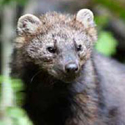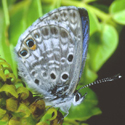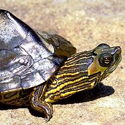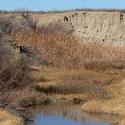ARCHIVES: HUNTING – the war on wildlife
Originally seen on November 7, 2009
ARTICLES YOU SHOULD HAVE READ THE FIRST TIME AROUND, BUT MISSED.
Simulposted with Animal Rights Africa
Committee to Abolish Sport Hunting (C.A.S.H.)

Hunters cherrypick the best specimens, turning them into trophies and useless carcass, thereby weakening the species gene pool.
object of the hunt is to kill animals. Hunters argue that it is not just about killing. They claim that the camaraderie, nature appreciation, exercise, nature education, and so-called conservation benefits are just as important a part of the hunt as the actual killing or attempted killing of the target animal.
But most people can appreciate and learn about nature and also contribute to nature conservation efforts without having to kill animals, and by doing their shooting with a camera instead of a gun or bow.
Do hunters really care?
It is ludicrous to believe that someone who actively sets out to kill a healthy animal for fun, trophy or profit really cares about wild animals specifically or nature in general. Photographs of smiling hunters posing with their dead victims hardly reflect the kind of “caring” that most normal people relate to. If hunters are the “true” conservationists they claim to be, and really do care about animals, they would pursue every humane, non-lethal possibility or means of caring for wild animals and the environment. Instead, their solution to any perceived problem with animals is to reach for the gun. Why is it that hunters, as so-called conservationists, are interested only in those animals that are most attractive as trophies, most enjoyable to eat or most “challenging” to hunt?
Do hunters pay for conservation?
Killing wild animals is big business, and there are lots of people who make a lot of money out of it. Those who encourage and participate in hunting form part of a multi-million Rand industry that will fight to its last breath to stay in business. Manufacturers and marketers of hunting gear and clothing, guns and ammunition, bows and arrows, camping equipment and much more have a vested interest in promoting hunting as a good, healthy outdoor sport for the whole family. The more hunters out there killing, the more they sell.
Game ranchers and provincial and national conservation authorities generate millions of Rands annually by selling wild animals to private game farmers where hunters pay exorbitant fees to kill them for fun, trophy or meat.
As with every other type of institutionalised animal abuse, hunting will not easily be abolished in spite of relentless pressure from animal rightists. What makes hunting relatively easy to defend is that the hunters have spread a false message that it is they who fund conservation, and that were it not for them, most conservation areas currently in private ownership would convert to agricultural land with the total loss of the wildlife at present on that land. This implies, firstly, that the only justification for maintaining wild animals on the land is to generate funds from hunting, and, secondly, that all land which is not profitable game ranching land must automatically be taken over by environmentally destructive agriculture. This is absolute nonsense.
Conservation and the protection of wild animals must be funded from ethically acceptable sources, including a conservation levy on all profits from the sale of goods or services which have their origin in any natural resource. Wildlife and environment conservation must not be abandoned to an animal-unfriendly system that uses profit to justify the killing of healthy, defenseless animals. By allowing hunters to make the claim that they “pay for conservation”, human society is failing in its responsibility to wildlife. The fate of wild animals has literally been abandoned into the hands of killers.
Do hunters fulfill the role of predator?
Definitely not. Hunters will not miss out on any opportunity to cover themselves in glory, even to the point of claiming the role of natural predator in those areas where natural predators have been eradicated or do not occur.
But as so-called predator, the hunter selects only the finest specimens to kill. This is in direct contradiction of the role of true predators, who hunt the old, disabled and unwary and in so doing maintain the health of the populations. Predators too old, disabled or incompetent are also preyed on, but not by human hunters who only want healthy specimens in the prime of life.
The sustained killing of prime specimens of any population or species leads to debilitation of the gene pool and can hasten the rate at which that population or species becomes endangered or even extinct. No natural predator would act in this manner unless in very unnatural and exceptional circumstances. Natural and balanced predator/prey relationships lead to healthy populations of both the prey and the predator species.
Why hunting is wrong!
Hunting is wrong because for no good reason it violates the most basic right of any living creature – the right to life. According to hunters, they only shoot animals who are surplus or excessive to the carrying capacity of the land or who are old or injured . They claim that their killing is done for humane and practical reasons, and that an untimely death by bullet or arrow is preferable to death from natural causes.
All of this presumes that animals who are killed or wounded by human hunters, endure less fear, stress and pain than those animals dying from natural causes, including predation.
It is a fact that hunters kill for the pleasure, the satisfaction and the boost it gives their fragile egos. This makes killing seem like an honorable pastime that others should strive to emulate. It relegates animals to the status of utility items that exist to pleasure humans, and if that pleasure lies in the killing of an animal, then so be it.
Hunting simply perpetuates the ethically indefensible conception that animals exist for humans. And nothing more emphatically emphasises this misconception than when humans deliberately track down a wild animal and kill it for fun, trophy or profit. This shows an absolute disregard by hunters for the right of wild animals to live out their lives as nature intended, in circumstances which allow them to enjoy the diverse experiences of living in their natural environment. And for as long as hunters are allowed to conduct their bloody war on innocent wild animals with the sanction of civil society, then every human in that society shares in the guilt of the wrongdoing.
Also, when a hunter removes the body of the animal he/she has killed, this in fact robs that ecosystem of the nutrients locked up in that animal’s body. Every animal is composed entirely of elements accumulated within the ecosystem in which that animal has lived. When an animal dies of natural causes, the body is decomposed or consumed within that ecosystem, and the elements which made up the body are released back into that ecosystem and recycled through other plants and animals. When a hunter removes the dead animal from that ecosystem, the elements contained in that body are lost to the ecosystem.
Considering the weapons used by hunters today, it is an understatement to say that a targeted animal has little or no chance of avoiding being killed or wounded. The distance from which a hunter can deliver a fatal shot far exceeds the distance from which a natural predator could successfully attack it’s intended prey. Wild animals have not yet evolved the instinct required to keep modern hunters at a “safe” distance.
Man has always hunted
There is a very clear attempt by hunters to defend their bloody sport by claiming that it is in the human genes to hunt. This is absolutely not true. Hunters are conditioned into hunting by their peers and by an industry, which in various ways encourages people to become hunters by associating it with manhood, adventure and even Divine decree.
What this implies is that humans are incapable of evolving into more civilised, caring and tolerant beings. Fortunately nothing could be further from the truth. There is hope for a future in which animals are respected for their inherent value, and that those laws which now give humans the “right” to own and abuse animals will be replaced by popular laws which protect the rights of all animals, just as they now protect the rights of all humans.
Hunters and criticism
Hunters are notoriously intolerant of anyone who questions their so-called “ethics” or who dares to criticise their violent pastime. Anyone who opposes the killing of innocent animals by hunters is labeled a “bunny-hugger”, “unrealistic”, “impractical”, “emotional”, “ignorant”, “humaniac”, even a “terrorist” if you happen to be an animal rightist.
Any critics of hunting are so ridiculed that both they and civil society at large are cowed into a state of silent acceptance of hunting as an indispensable, even honorable, component of orthodox conservation policy and practice.
That hunters have to go to ever-greater lengths to defend their actions to an increasingly critical, well-informed public, is encouraging. However, the use of terms such as “sustainable use” and “wise use” have become the everyday language of hunters and are intended to give legitimacy to their killing.
It is also an unfortunate reality that most wildlife-related NGO’s are dominated by people who are themselves hunters or who see no wrong in others killing wild animals for fun, profit or trophy. Most ordinary members of these organisations are quickly indoctrinated into accepting that hunting is a necessary evil that goes hand in hand with so-called “sustainable use”. Those who criticise the hunting aspect of “sustainable use” are ostracised and sidelined within the organisations of which they are members.
What you can do to oppose hunting
1. Join JA and become an anti-hunting activist
2. Write to provincial and national conservation authorities and object to the opening of conservation areas to hunters
3. Let hunters know that you are opposed to their violent pastime
4. Don’t visit conservation areas which allow hunting
5. Don’t purchase the by-products of hunting i.e venison, biltong, animal skins, curios from hunted animals
6. Boycott stores that sell hunting equipment and promote hunting
7. Write anti-hunting letters to newspapers and magazines
8. Support campaigns to end hunting
9. Do not join or support conservation organisations that promote or tolerate hunting as an acceptable component of “sustainable use”.
For the latest updates on the animal liberation movement, visit NAALPO at http://www.animalliberationpressoffice.org/









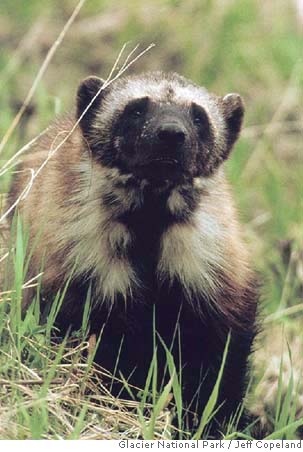

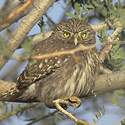
TomARanker_125.jpg)
GlenTepke_125.jpg)

RobinSilver_125.jpg)
